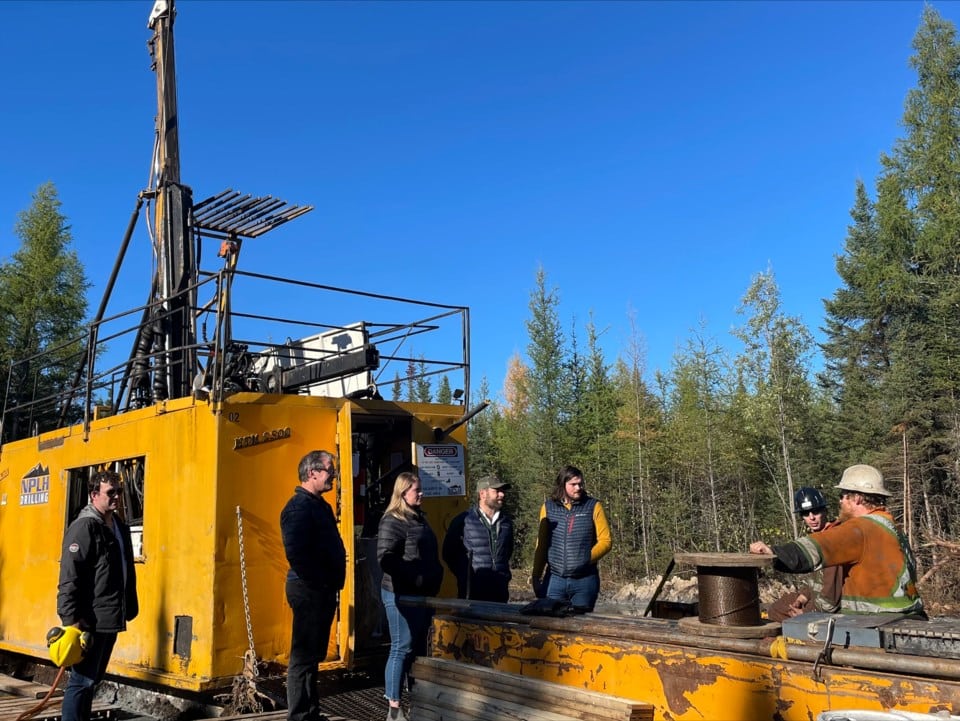The proponents of a Timmins-area nickel mine are promoting the open-pit project as one of the largest carbon capture storage facilities in Canada.
As much as Canada Nickel Company has been hawking the nickel potential of its Crawford Project, the junior miner has also been talking up how the project can be a transformative mine-of-the-future with a zero carbon footprint.
The Toronto mine developer has been promoting Crawford as one of the largest nickel sulphide discoveries in the world since the 1970s. Due to the nature of the deposit and how it can be processed, Canada Nickel believes the metal can be treated in a very low carbon way. That should be pleasing to federal regulators in permitting the project.
Crawford is shaping up to be a large-volume, low-grade nickel deposit, processing 120,000 tonnes of ore a day over a 25-year mine life. The cost to build Crawford is US$1.2 billion.
Their target customers are the electric battery vehicle manufacturers. The company is seeking to do direct deals with the battery makers, especially from South Korea, to finance the construction of the mine.
Canada Nickel views the mineral potential of their extensive property package, 40 kilometres north of the city, as evolving into a series of open-pit mines with an operational life stretching over a few decades.
The property contains 42 square kilometres of ultramafic rocks, which the company contends could “anchor a zero-carbon industrial (manufacturing) cluster.”
Because Crawford is an ultramatic deposit, the tailings and other mine waste rock generated after milling naturally and spontaneously absorbs and sequesters CO2 (carbon dioxide) when exposed to air.
The company has dived deep into the science of tailings and ultramafic rocks and has come up with a “novel” approach – dubbed In-Process Tailings (IPT) Carbonation – that helps speed up that geochemical reaction by injecting a concentrated amount of CO 2 into the rock.
The company been doing a raft of test work using the IPT treatment and spit out some numbers last week demonstrating that they can generate 37 tonnes of carbon credits per tonne of nickel produced after seven days. That would translate to an average of 1.1 million tonnes of carbon credits a year, or a total of 27 million tonnes of CO2 captured over the 25-year life of the mine.
Shell Canada said its Quest Carbon Capture Storage facility near Edmonton captures and stores underground more than one million tonnes of CO2 a year, a figure disputed by some environmental watchdog groups.
Canada Nickel thinks their IPT method can be installed inside a milling complex at the site to have the carbon captured before the waste rock leaves the facility.
In the push for industry to become part of a low-carbon world, Canada Nickel believes producing a net-zero nickel along with cobalt, iron and chromium by-products could add exponentially value for its future customers.
That’s incentive enough to chase some federal tax credits, as outlined in Ottawa’s Critical Minerals Strategy, to secure funding to use in the development at Crawford and possibly a bigger “zero carbon industrial cluster in the Timmins-Cochrane region,” the company said in a recent news release.
All these latest results will be packed into a feasibility study for Crawford which is expected out sometime during the second half of this year.
The company said it’s on track to gather all the necessary government permits by the middle of 2025 with mine construction to follow.
“We believe the Crawford Project has the potential to be a case study in how critical minerals are developed in Ontario and Canada,” said Mark Selby, chair and CEO of Canada Nickel in a Jan. 4 statement.
“Crawford is poised to support the energy transition through the large scale production of critical minerals, including nickel and cobalt, and to become the sole North American producer of chromium, while also supporting the country’s climate objectives through large scale carbon capture and storage.”
Within the last year, Canada Nickel has been acquiring other prospective nickel properties in the Timmins-Cochrane area that the company can be brought into production in short order.




